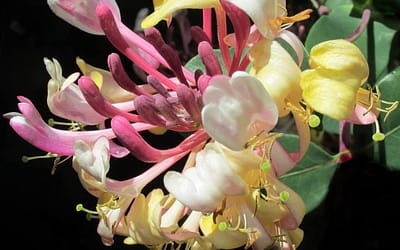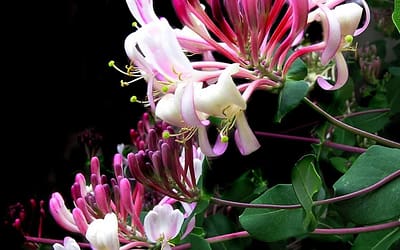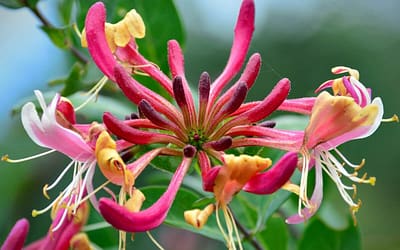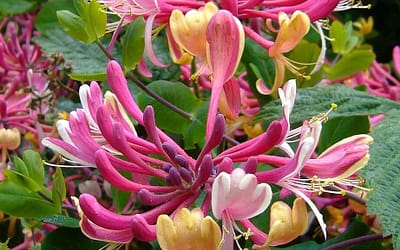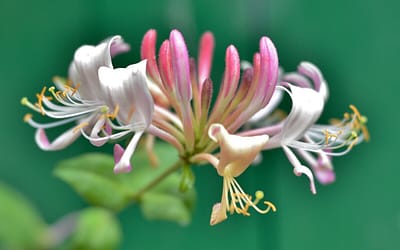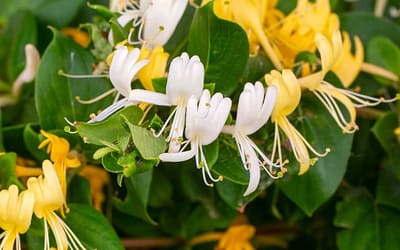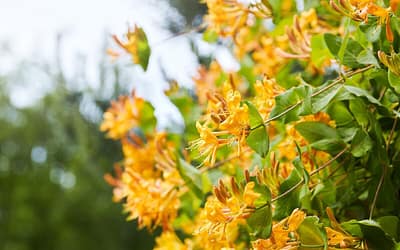Abelia x grandiflora: A Shrub That Shines Throughout the Year
Glossy Abelia
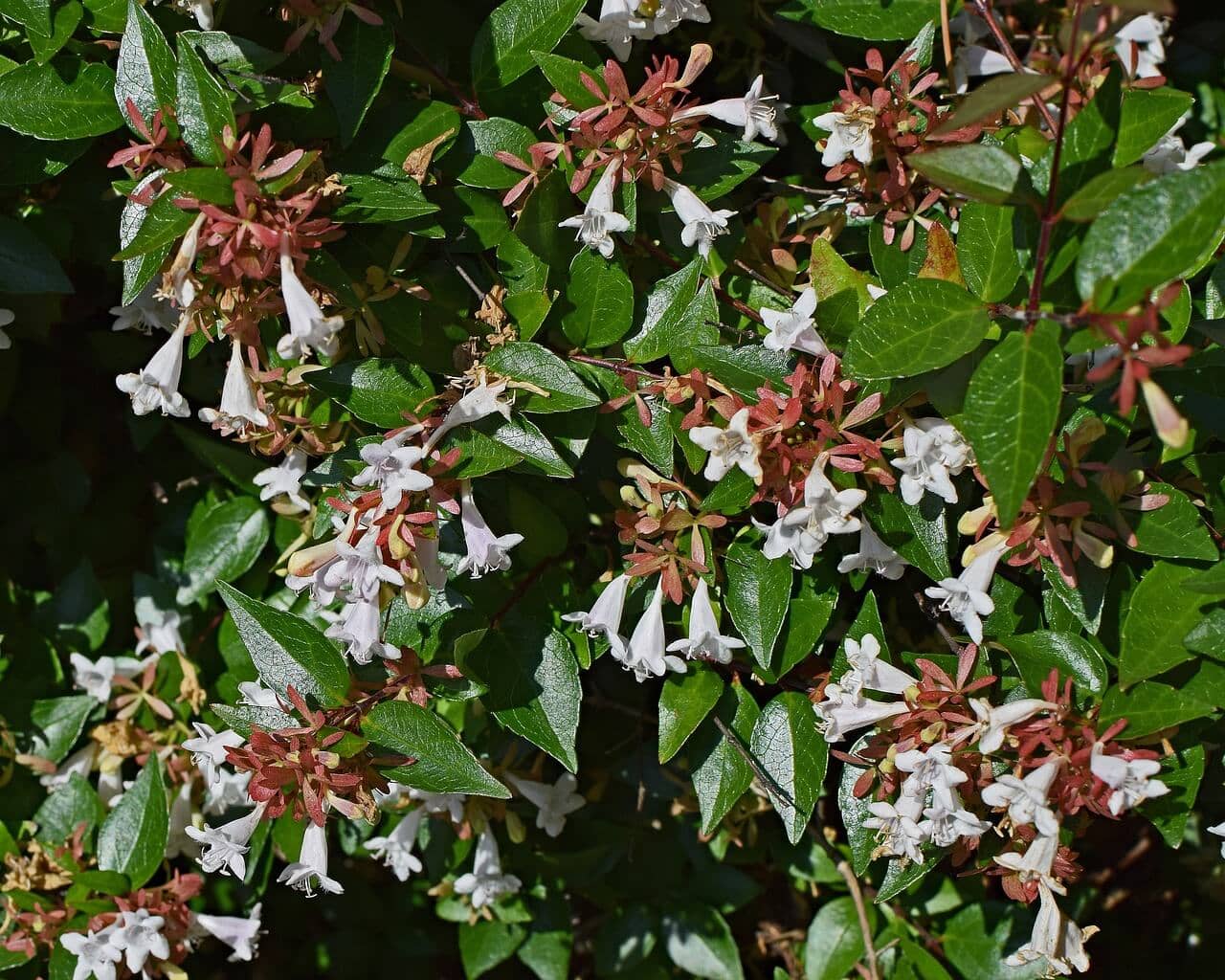
Position
- Thrives in full sun to partial shade.
Hardiness
- Hardy down to approximately -10°C (14°F).
Soil Type
- Well-drained soil; adaptable to sandy, loamy, and clay soils.
Soil PH
- Tolerates acid, neutral, and alkaline pH levels
- Grab a soil test kit and ensure the perfect conditions for growth
Height
- Reaches 1.5 to 3 metres (5 to 10 feet).
Seasons of Interest
- Flowering Times:
- Blooms from late spring to autumn with small, tubular white or pale pink flowers.
- Foliage:
- Semi-evergreen with glossy leaves that can develop bronze or purple tints in autumn. No significant variegation.
Abelia x grandiflora: The Ultimate Guide to Growing Glossy Abelia
Abelia x grandiflora, commonly known as the glossy abelia, is a versatile and attractive shrub that provides year-round interest to any garden. Renowned for its colourful foliage and delicate blooms, Abelia x grandiflora is an excellent choice for gardeners seeking to add texture and colour to their landscapes. This guide will explore the unique characteristics, ideal growing conditions, and care requirements to ensure your Abelia x grandiflora thrives.
Introduction to Abelia x grandiflora
Abelia x grandiflora, commonly known as the glossy abelia, is a versatile and attractive shrub that provides year-round interest to any garden. Renowned for its colourful foliage and delicate blooms, Abelia x grandiflora is an excellent choice for gardeners seeking to add texture and colour to their landscapes. This guide will explore the unique characteristics, ideal growing conditions, and care requirements to ensure your Abelia x grandiflora thrives.
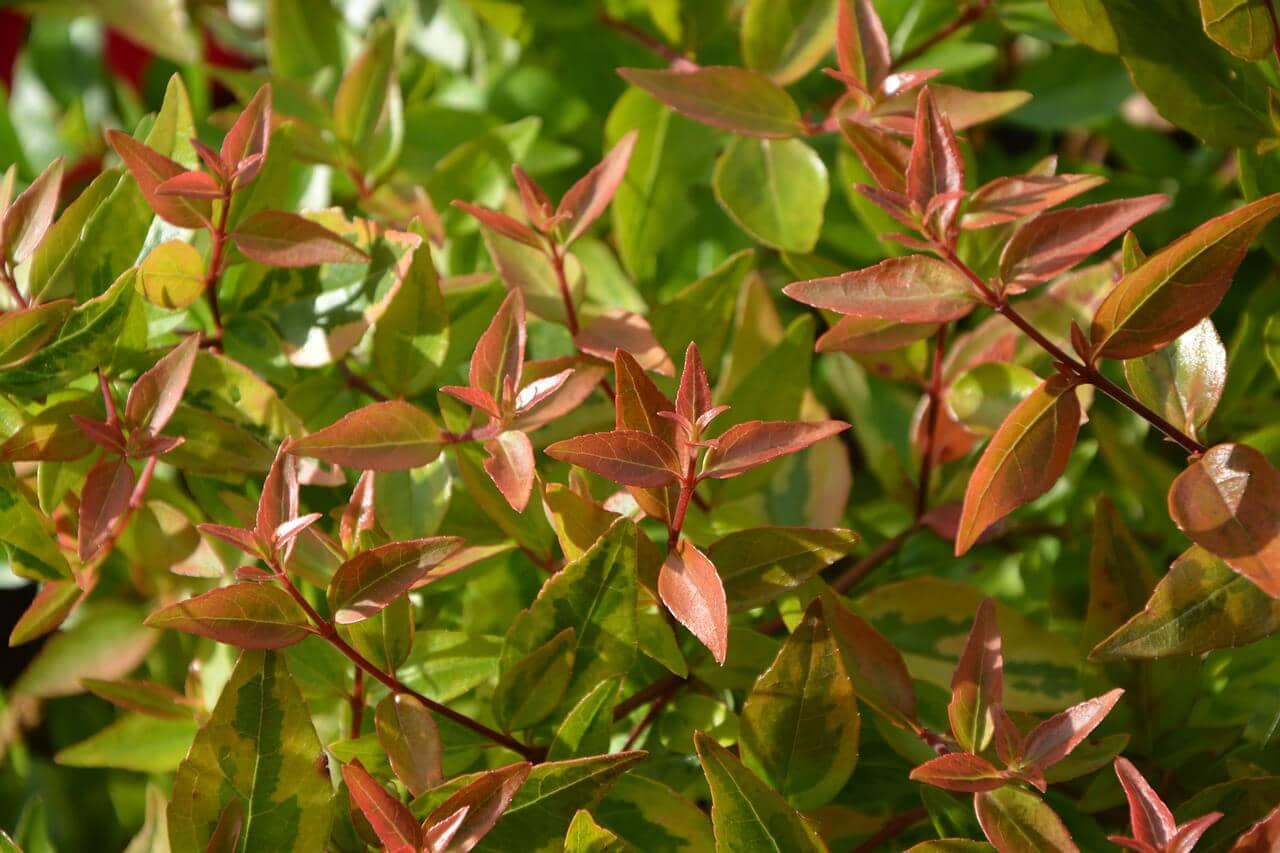
Vibrant Foliage and Blooms
One of the standout features of Abelia x grandiflora is its semi-evergreen foliage, which remains on the plant for most of the year. The glossy leaves start with a bronze hue and mature to dark green, providing a brilliant backdrop for its flowers. In autumn, the foliage often takes on a bronze or purple tint, adding another layer of seasonal interest.
The flowers of Abelia x grandiflora are small, tubular, and typically white or pale pink. Blooming from late spring to autumn, they create a pretty display that attracts pollinators like bees. The blooms have a light fragrance, enhancing the sensory appeal of the garden.
Ideal Growing Conditions
For optimal growth, consider the following conditions for your Abelia:
-
Sunlight: Abelia x grandiflora thrives in full sun to partial shade. While more sun encourages better flowering, the plant can tolerate some shade. In hotter climates, providing afternoon shade can help prevent leaf scorching.
-
Soil: This shrub prefers well-drained soil but is adaptable to various soil types, including sandy, loamy, and clay. It performs best in moderately fertile soil enriched with organic matter.
-
Temperature Tolerance: Abelia x grandiflora is relatively hardy, tolerating temperatures to approximately -10°C (14°F). Protect it in severe winters for added security.
Planting Abelia x grandiflora
Planting Abelia x grandiflora correctly is crucial for its healthy establishment and growth. Here are the steps to follow:
- Site Selection: Choose a spot with adequate sunlight and well-drained soil. Ensure sufficient space for the plant to spread, as it can reach a height and width of 1.5 to 3 metres (5 to 10 feet).
- Soil Preparation: Amend the soil with compost or well-rotted manure to enhance fertility and drainage. This helps the plant establish a strong root system.
- Planting Process: Plant in spring or autumn when temperatures are milder. Dig a hole twice as wide and as deep as the root ball. Position the plant with the top of the root ball level with or slightly above the soil surface. Backfill with soil, firming gently, and water thoroughly.
Care & Maintenance
Abelia x grandiflora is relatively low-maintenance, making it ideal for busy gardeners. Here are some care tips:
-
Watering: Keep the soil moist during its first growing season. Once established, it is drought-tolerant but benefits from regular watering during dry spells.
-
Mulching: Apply a layer of mulch around the base of the plant to conserve moisture, suppress weeds, and provide nutrients as it decomposes.
-
Fertilising: Feed with a balanced, slow-release fertiliser in spring to support vigorous growth and abundant flowering. Avoid over-fertilising, which can lead to excessive vegetative growth at the expense of flowers.
-
Pruning: Prune in late winter or early spring to remove dead, damaged, or crossing branches and maintain the desired shape. Light trimming throughout the growing season can encourage bushier growth.
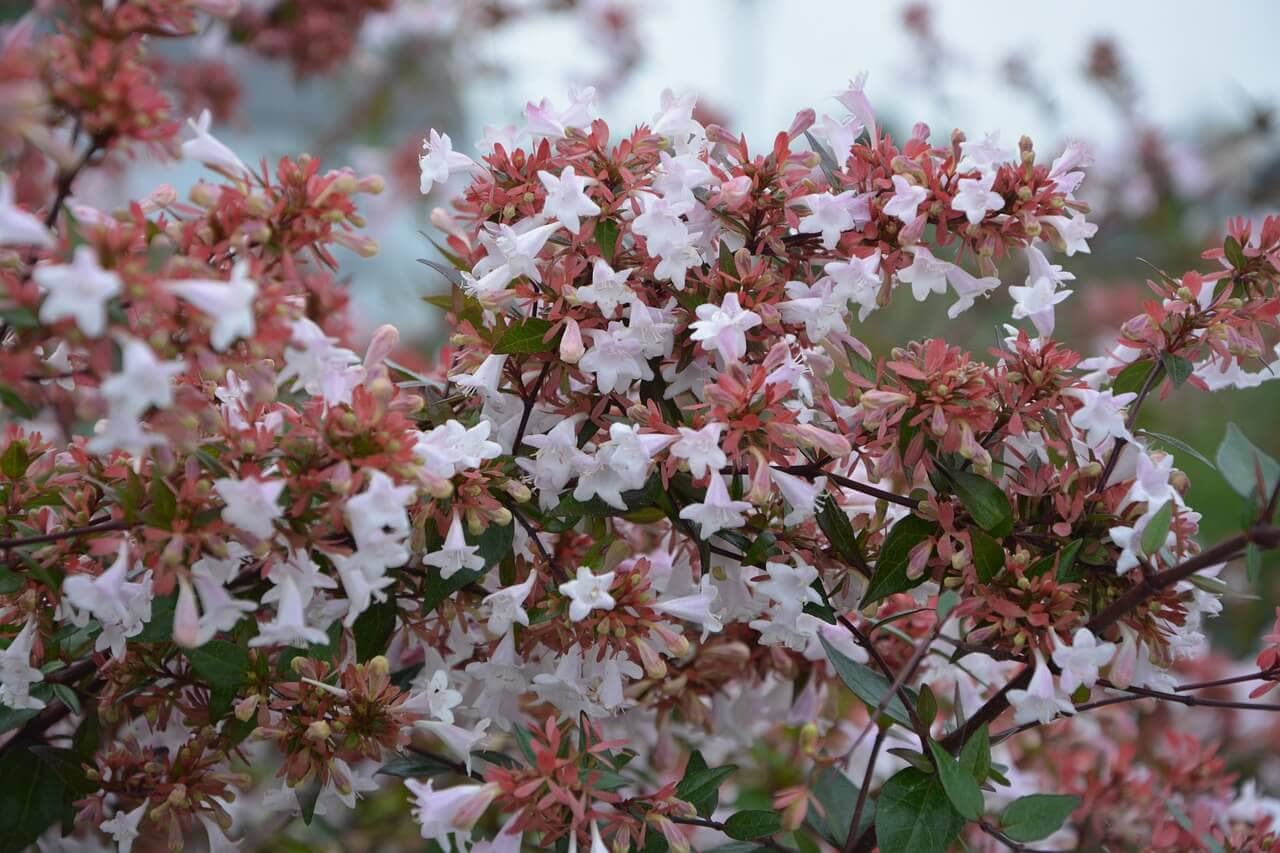
Pests and Diseases
Abelia x grandiflora is generally resistant to pests and diseases, which adds to its appeal as a garden shrub. However, occasional issues may arise, such as aphids or leaf spots. Manage aphids with insecticidal soap and ensure good air circulation to prevent fungal issues. Keeping the shrub healthy through proper care will minimise these problems.
Design Ideas for Your Garden
Abelia x grandiflora offers incredible versatility in garden design. Here are some ideas for incorporating it into your landscape:
-
Hedges and Screens: Plant densely to create an informal hedge or screen, offering privacy and an attractive visual barrier.
-
Mixed Shrub Borders: Combine with other flowering shrubs or perennials to create a multi-seasonal display. Its attractive foliage and flowers complement a range of plants.
-
Containers: Its size makes it suitable for large containers, allowing you to move it around or feature it on patios and terraces.
-
Ground Cover: Use it as a ground cover for larger areas, contributing texture and colour to the landscape.
Final Thoughts
Abelia x grandiflora is a stunning and reliable shrub that adds year-round interest to any garden. Its glossy foliage, delicate blooms, and adaptability to various growing conditions make it an excellent choice for gardeners of all skill levels. By providing the right site, soil, and care, you can enjoy the beauty and versatility of Abelia x grandiflora in your landscape.
Whether used as a hedge, a border plant, or an individual specimen, this shrub will enhance your garden’s aesthetic and ecological value. Embrace the opportunity to grow one of the most charming and easy-to-care-for plants and watch it transform your garden with its vibrant colours and textures.
If you’d like to learn more about Abelia, the RHS has a great article you can explore here.
For more information on Shrubs, please click here.
Frequently Asked Questions
Q: How tall does Abelia × grandiflora grow?
A: This shrub typically reaches a height and spread of 1.5 to 3 metres (5 to 10 feet) over a period of 10 to 20 years.
Q: When does Abelia × grandiflora flower?
A: It blooms mid-summer to autumn, producing fragrant pink-white flowers.
Q: Is Abelia × grandiflora evergreen?
A: Abelia × grandiflora is semi-evergreen, retaining most of its leaves during mild winters. However, in harsher conditions, it may shed some foliage.
Q: What type of soil does it prefer?
A: This shrub thrives in moist but well-drained soil and adapts well to chalk, loam, or sandy soils with acid, neutral, or alkaline pH levels.
Q: How much sun does it need?
A: Abelia × grandiflora performs best in full sun or partial shade, preferably in a sheltered position with an east, south, or west-facing aspect.
Q: Is it frost-hardy?
A: It is hardy down to -10°C (14°F). However, in severe winters, some protection may be beneficial.
Q: How often should I prune?
A: Prune in late winter or early spring. Every 3 to 4 years, a more rigorous pruning may be necessary to maintain its shape and vigour.
Q: Does it need regular feeding?
A: Apply a balanced feed in spring, followed by mulching to help retain moisture.
Q: Is it drought-resistant?
A: Once established, Abelia × grandiflora exhibits good drought tolerance. However, regular watering can enhance flowering.
Q: What wildlife does it attract?
A: The fragrant flowers attract bees and butterflies, making it an excellent choice for wildlife gardens.
Q: Can I grow it in containers?
A: Yes, it grows well in large containers with good drainage. Regular watering and winter protection are necessary to ensure its health.
Q: How far apart should I plant multiple shrubs?
A: Space plants 2 to 3 metres apart to allow for their mature spread.
Q: Does it suffer from any particular pests or diseases?
A: Generally, Abelia × grandiflora is pest-free. However, in poor conditions, it can be susceptible to honey fungus.
Q: When is the best time to plant?
A: Plant in spring or autumn when the soil is workable and neither waterlogged nor frozen.
Q: How do I propagate Abelia × grandiflora?
A: Take softwood cuttings in early summer or semi-hardwood cuttings in late summer.
Q: Where can I purchase Abelia × grandiflora?
A: Abelia × grandiflora is available at local garden centres and through various online retailers.
Related Articles
Lonicera periclymenum Rhubarb and Custard
Honeysuckle Full sun to partial shade Any aspect - north, south, east, or west-facing Sheltered or exposed positions Ideal against walls, fences, or through trees Tolerates temperatures down to -20°C (-4°F) Fully hardy throughout UK Moist but well-drained soil Adapts...
Lonicera Belgica – Early Dutch Honeysuckle
Early Dutch Honeysuckle Partial shade to full sun North, south, east, or west-facing aspects Sheltered or exposed sites suitable Best against walls, fences, or climbing through trees Tolerates temperatures down to -20°C (-4°F) Fully hardy throughout UK Moist but...
Lonicera x heckrottii American Beauty
Honeysuckle Full sun to partial shade East, west, or south-facing aspects Sheltered or exposed locations suitable Fully hardy in UK climate Tolerates temperatures down to -15°C (5°F) Thrives in moist but well-drained soil Adaptable to clay and loam soils Suits acid,...
Lonicera Serotina – Late Dutch Honeysuckle
Late Dutch Honeysuckle Best in partial shade, though tolerates full sun Suitable for east, west, south, or north-facing aspects Can be grown in exposed or sheltered locations Fully hardy in UK climate Tolerates temperatures down to -20°C (-4°F) Adaptable to chalk,...
Lonicera periclymenum Strawberries and Cream
Honeysuckle Full sun to partial shade Sheltered from strong winds North, east, or west-facing walls suitable Fully hardy in UK climate Tolerates temperatures down to -15°C (5°F) Moist but well-drained Rich in organic matter Fertile loam ideal Adaptable to all soil...
Lonicera japonica Halls Prolific
Japanese Honeysuckle Full sun or partial shade South or west-facing aspect ideal Sheltered from strong winds Can grow in north-facing positions but may flower less Hardy down to -15°C (5°F) Semi-evergreen in mild winters, deciduous in harsh winters Moist but...
Lonicera x tellmanniana
Tellmann's Honeysuckle Prefers full sun or partial shade Ideal for a south-west facing position Should be sheltered from strong winds Roots enjoy cool conditions while the stems reach for sunlight Hardy down to -15°C to -10°C (5°F to 14°F) Thrives in moist but...
Lonicera periclymenum
Common Honeysuckle Prefers full sun to partial shade A sheltered spot is ideal to protect from harsh winds Can survive temperatures down to -15°C (5°F) Thrives in well-drained soil Can adapt to a range of soil types, including clay, loamy, and sandy soils Prefers...
Hedera helix Glacier
Glacier Ivy North, east, or west-facing walls Partial to full shade Sheltered from strong winds Can tolerate full sun in cooler areas Down to -15°C (5°F) Well-drained soil Medium moisture retention Rich in organic matter Clay, loam, or sandy soils all suitable Neutral...

